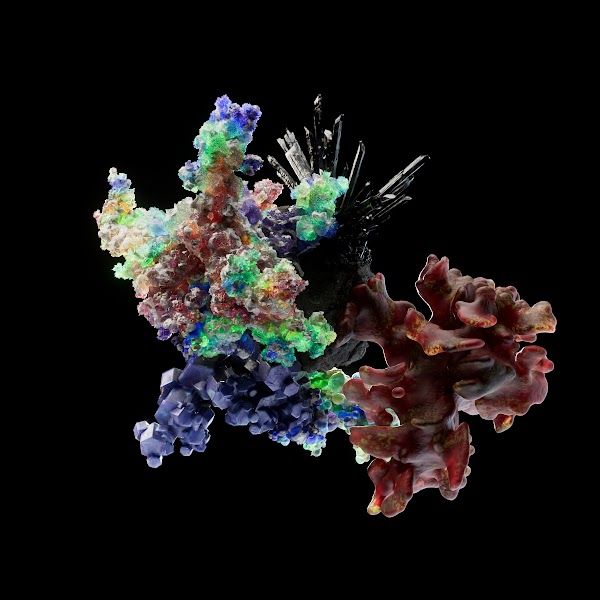Dynamic NFTs – Smart Contracts that Change Your NFT

The deluge of static NFTs are boring me. What do I mean by static? Basically what is sold is what that piece will forever be. You might counter me, saying, “Isn’t that the basic premise of art appreciation… that the piece is finished and we get to consume and collect it?”
Yes, but smart contracts make it possible for NFTs and the digital art encapsulated to evolve over time. While I don’t find anything wrong with static NFT art, as we look into 2022, dynamic NFTs are what we’ll be talking about and praising as the new example to follow.
merge. and OG:Crystals
The reason I bring dynamic NFTs up is that over the past week I came across two really great examples that I think we’ll see many people biting.
merge.
Created by Pak, one of the more recognizable names in NFTs, merge. is an NFT project whose smart contract bakes a scarcity mechanism right into the NFTs themselves.
The project revolves around “mass” and the concept of acquiring more mass. For 48 hours, they held an open sale of mass. Each unit of mass cost $575. They sold 266,434 units of mass… you do the math!
Now that the open sale is complete, the goal is for collectors to “amass more mass” and the merge. token in their wallet will physically grow every time they collect more mass. Basically, the NFT’s smart contract is created in such a way that once mass is sold and transferred to another person’s wallet, those two mass tokens merge into one and grow. For example, if I had a mass of 1 and purchased a mass of 10, then my new mass would be 11.
Once mass is merged, it cannot be broken into smaller pieces. So collecting gets harder and harder over time as the number of collectors and number of mass tokens will always be getting smaller.
What I like about this is that Pak boiled the concept of being a power-collector down to its most basic unit – quantity collected. Collectors don’t have to worry about rarity or any special collectible characteristics. Just acquire more and your NFT will grow. As you acquire more, your NFT becomes more valuable because it has more mass.
OG:Crystals
The second example of a dynamic NFT that really caught my eye was OG:Crystals. The dynamic concept they explore is that the NFT changes based on the information in a given collector’s wallet.
It starts with OG:Crystal seeds. After owning one for 5 days, your seed grows into a crystalline / coral reef structure. It’s algorithmically generated using data inputs from your wallet history. Every time the piece is sold or transferred to a new wallet, the OG:Crystal grows a new structure using the data inputs from that new person’s wallet. Data used to generate the crystals includes:
- Wallet ID
- Transaction time and block number
- Amount of past transactions
- Wallet ETH balance
- Amount of NFT art
- And more
In essence, the OG:Crystal becomes a visual history of all the collectors who’ve held that OG:Crystal. You might even say that they’re promoting collectors to continue exchanging these NFTs in order to grow more elaborate and meaningful crystals.
Dynamic NFTs
Dynamic NFTs, NFTs that can evolve and change over time, are going to be a huge area for exploration in 2022. It’s what can truly differentiate collecting digital art from physical art… because the art keeps changing.
In the two examples above, their dynamic NFTs challenge the concept of collecting and collector history. Artistically, these ideas are sound. But the secret sauce of their dynamic NFTs is the smart contract.
Understanding what is possible with smart contracts is not easy. After all, we’re talking about a merging of artistic and technical creativity.
Ultimately, these skills will become democratized for others to use and play around with. In the meantime, we have teams like Manifold that will handle all the technical creativity of web3 and smart contracts.
Ready to Learn About NFTs?
Join 11,000+ readers of NFT QT, a weekly newsletter packed with tips and actionable insights for people fascinated with NFTs just like you.
